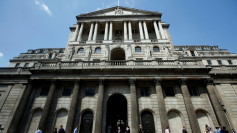The U.S. economy shrank at a 0.2% annualized pace in the first quarter of 2025, the Commerce Department said Thursday, confirming the first contraction in three years as American businesses rushed to import goods ahead of President Donald Trump's sweeping tariffs. The revised figure improved slightly from the initial 0.3% estimate, but still reflects the impact of rising trade tensions and volatile policy signals on consumer and corporate behavior.
Imports soared at a 42.6% annual rate, the sharpest pace since the third quarter of 2020, subtracting more than five percentage points from gross domestic product. The surge stemmed from companies stockpiling goods to get ahead of Trump's 10% universal tariff plan, which targeted nearly all foreign imports including steel, autos, and electronics. The tariff push has unsettled markets and now faces serious legal challenges.
A federal court on Wednesday blocked the administration's latest round of tariffs, ruling that the president overstepped his authority under emergency economic powers. The Trump administration filed an appeal within hours, setting the stage for a potential Supreme Court showdown. The court also nullified specific levies on Chinese, Canadian, and Mexican goods.
Consumer spending-responsible for roughly two-thirds of U.S. GDP-slowed sharply during the quarter, particularly in areas such as food, vehicles, and financial services. A key gauge of underlying demand, known as real final sales to private domestic purchasers, was revised downward by half a percentage point.
"Newly delinquent credit accounts are on the rise, so in addition to anticipating the effects of new economic policies on prices, we'll want to keep an eye on the potential impact to household debt management," Elizabeth Renter, senior economist at NerdWallet, said in a Thursday research note.
Business investment jumped 24.4%, while inventory accumulation added 2.6 percentage points to growth, particularly from nondurable goods manufacturers and firms in the information sector. Meanwhile, federal government spending declined at a 4.6% annual rate-the steepest drop in three years.
A separate Commerce Department metric excluding inventories, exports, and government spending showed core economic strength moderating, with growth slowing to 2.5% from 2.9% in the prior quarter.
Federal Reserve policymakers warned this month that Trump's trade policy introduces "considerable uncertainty" into the outlook. Minutes from the May 6-7 meeting revealed that officials "assessed that there was a risk that the labor market would weaken in coming months," as businesses increasingly report "limiting or pausing hiring because of elevated uncertainty."






